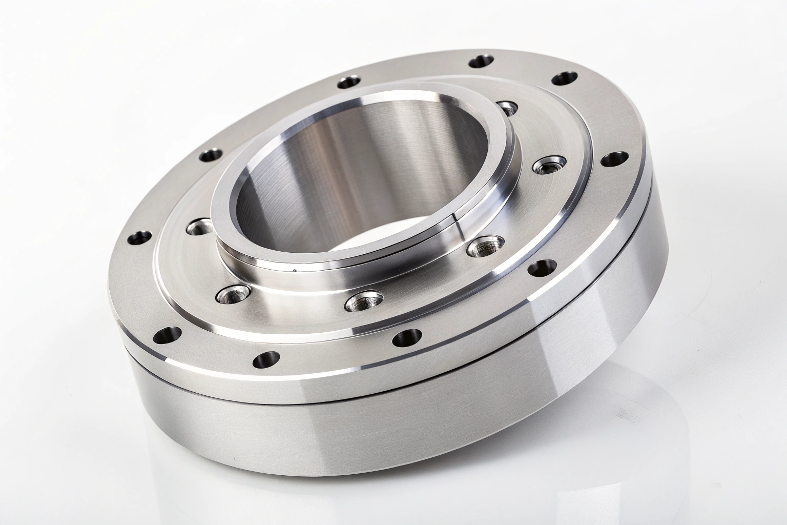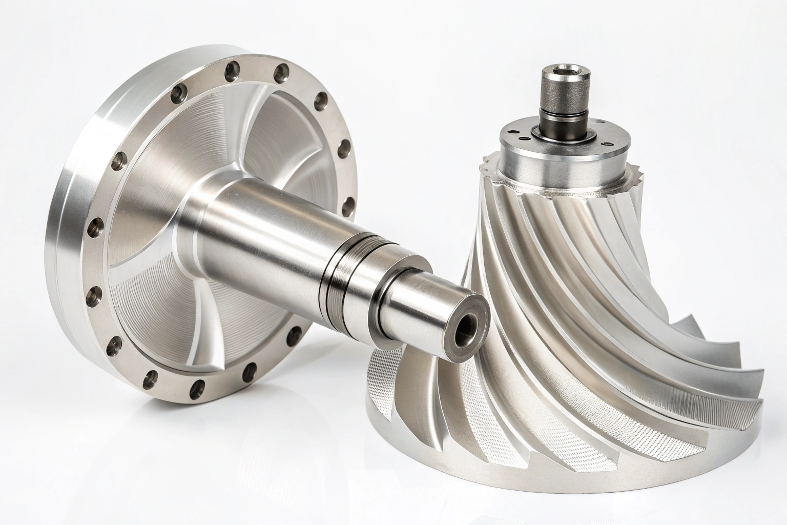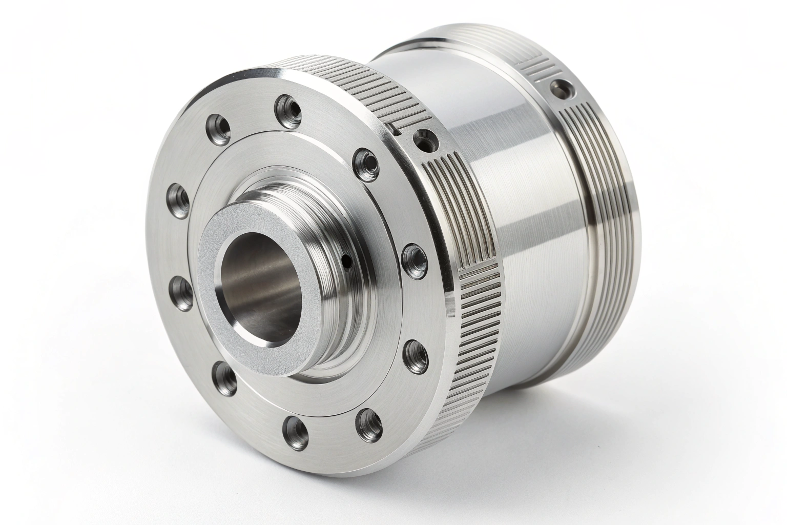Have you ever worked on a CNC machine only to find that the final part didn’t match your expectations? Frustrating, isn’t it? Precision loss is one of the biggest challenges we face in CNC machining. It’s not just about producing defective parts—it’s about wasted time, higher costs, and delays that can throw off your entire workflow.
Here’s the thing: precision isn’t something you can take for granted. Even the smallest misstep—like a misaligned tool or inconsistent cutting parameters—can lead to significant errors. But don’t worry; we’ve all been there, and the good news is that these problems can be solved.
Quick Answer:
To avoid precision loss in CNC processing, focus on these key actions:
- Maintain the Machine: Regularly clean, lubricate, and calibrate the machine to ensure accurate operation.
- Use Quality Tools: Replace worn tools promptly and use tools with proper geometry and coatings.
- Secure Workpieces Properly: Ensure the workpiece is tightly clamped to avoid movement during machining.
- Optimize Cutting Parameters: Set the correct cutting speed, feed rate, and depth of cut to minimize errors.
- Control Temperature: Use coolants and maintain a stable workshop temperature to prevent thermal expansion.

Understanding the Sources of Precision Loss in CNC Machining
Machine-Related Factors
These factors relate to the inherent limitations and characteristics of the CNC machine itself.
-
Machine Tool Geometry Errors
- Spindle Runout: The radial and axial deviation of the spindle's rotation axis from its true center. This leads to variations in cutting depth, poor surface finish, tool breakage, and dimensional inaccuracies.
- Axis Misalignment: Errors in the parallelism, perpendicularity, or straightness of machine axes. For example, the X and Y axes not being perfectly perpendicular results in inaccurate positioning and contouring.
- Squareness Errors: Deviations from 90 degrees between axes cause inaccuracies in machined features.
- Impact on Part Accuracy: These errors compound and directly translate to inaccuracies in the machined part, affecting dimensions, form, and surface finish.
-
Machine Stiffness and Vibration
- Effects of Insufficient Rigidity: Low stiffness leads to deflection under cutting forces, resulting in dimensional errors and poor surface finish.
- Sources of Vibration: Cutting forces, unbalanced rotating components (spindles, tools), and external vibrations can induce unwanted oscillations.
- Chatter: Self-excited vibrations between the cutting tool and workpiece result in poor surface finish, noise, and accelerated tool wear. Chatter often leaves rhythmic patterns on the machined surface.
-
Thermal Effects
- Heat Generation: Friction between the tool and workpiece, along with motor operation, generates heat during machining.
- Thermal Expansion and Contraction: Temperature changes cause expansion and contraction of machine components and the workpiece, leading to dimensional variations.
- Importance of Thermal Stability: Stable temperature environments and the use of cooling systems (coolants, machine cooling) are essential for minimizing thermal errors.
-
Backlash and Mechanical Wear
- Explanation of Backlash: Backlash is the play or lost motion between mating mechanical components, such as lead screws and nuts.
- Mechanical Wear: Components like lead screws, bearings, and guideways wear over time, increasing backlash and reducing accuracy.
- Impact on Positioning Accuracy: Backlash negatively affects the machine's ability to accurately position the tool, especially during reversals in motion.
-
Servo System Performance
- Accuracy and Resolution of Servo Motors and Feedback Devices: The precision with which servo motors position the axes and the resolution of feedback devices (encoders) determine overall accuracy.
- Influence of Servo Lag and Following Error: Servo lag (delayed response) and following errors (differences between commanded and actual positions) impact contouring accuracy and dynamic performance.
Tooling-Related Factors
The cutting tool plays a critical role in machining accuracy.
-
Tool Wear
- Different Types of Tool Wear: Includes flank wear (wear on the flank face), crater wear (on the rake face), notch wear, and chipping.
- Impact on Precision: Worn tools increase cutting forces, degrade surface finish, and alter part dimensions.
- Importance of Tool Monitoring: Regular inspection and timely replacement ensure consistent accuracy.
-
Tool Deflection
- Causes of Deflection: Cutting forces acting on the tool, influenced by tool length, diameter, material properties, and tool holding.
- Methods to Minimize Deflection: Use shorter tools, increase tool diameter, use rigid tool holders, and optimize cutting forces.
- Impact on Accuracy: Excessive deflection causes uneven cuts and dimensional inaccuracies.
-
Tool Runout and Balance
- Tool Runout: Misalignment of the tool's rotational axis with the spindle causes inconsistent cutting depth and reduced tool life.
- Importance of Tool Balancing: At high spindle speeds, tool imbalance causes vibrations, reducing surface finish quality and precision.
Workpiece-Related Factors
The properties of the workpiece and how it's secured also influence precision.
-
Material Properties
- Material Hardness and Machinability: Harder materials require higher cutting forces, increasing the risk of tool deflection and vibration.
- Internal Stresses: Residual stresses in materials can be released during machining, causing distortion.
- Selecting Parameters: Proper cutting parameters matched to the material minimize errors and prolong tool life.
-
Workpiece Clamping
- Importance of Secure Clamping: Stable and rigid clamping prevents movement during machining, ensuring dimensional accuracy.
- Effects of Improper Clamping: Vibrations, workpiece movement, and distortion lead to inaccuracies.
- Workholding Devices: Solutions like vises, chucks, fixtures, and vacuum chucks are tailored to specific shapes and operations.
Cutting Parameter-Related Factors
The settings used during machining directly affect precision.
-
Cutting Speed, Feed Rate, and Depth of Cut
- Optimal Selection: Proper selection minimizes heat generation, cutting forces, and tool wear while maximizing material removal.
- Impact of Incorrect Parameters: Poor settings lead to excessive cutting forces, vibrations, and rapid tool wear.
-
Coolant Application
- Coolant Selection and Application: Coolants reduce friction and heat while improving chip removal and surface finish. Correct application methods (e.g., flood, mist, through-tool) enhance machining precision.

Strategies for Minimizing Precision Loss in CNC Machining
Minimizing precision loss in CNC machining requires a proactive and comprehensive approach. The following strategies address the key sources of error discussed previously.
Machine Maintenance and Calibration
Regular maintenance and calibration are crucial for maintaining machine accuracy over time.
- Regular Maintenance Schedules:
- Lubrication: Regular lubrication of guideways, lead screws, and other moving parts reduces friction and wear. Using the correct type of lubricant is crucial.
- Cleaning: Removing chips, debris, and coolant buildup prevents interference with moving parts and ensures accurate positioning.
- Inspection: Regular inspection of critical components (bearings, lead screws, guideways) for wear and damage.
- Replacement of Worn Parts: Prompt replacement of worn parts prevents further damage and maintains machine accuracy.
- Calibration of Machine Axes and Spindles:
- Axis Calibration: Use precision measuring instruments (laser interferometers, ball bars) to measure and correct axis positioning errors, straightness, and squareness.
- Spindle Calibration: Check and correct spindle runout, both radial and axial, to reduce vibration and cutting inconsistencies.
- Geometric Calibration: Verify and adjust the geometric relationships between machine components, such as squareness and alignment.
- Importance of Preventive Maintenance:
- Preventive maintenance minimizes unexpected downtime and prevents catastrophic failures. It's more cost-effective than reactive maintenance, ensuring consistent machine performance.
Tool Management
Effective tool management ensures that the right tool is used in the right condition.
- Proper Tool Selection for Specific Applications:
- Tool Material: Use appropriate materials like high-speed steel (HSS), carbide, ceramic, or diamond for specific machining needs.
- Tool Geometry: Optimize cutting edge geometry, rake angle, and clearance angle to suit the operation.
- Coatings: Select coatings such as TiN, TiAlN, or DLC for enhanced tool performance and durability.
- Regular Tool Inspection and Replacement:
- Inspect tools for wear, chipping, and other damage using magnification or tool monitoring systems.
- Use tool life management systems to predict wear and schedule timely replacements.
- Tool Presetting and Measurement:
- Accurately measure and preset tool dimensions (length, diameter) outside the machine to minimize setup errors.
- Use presetting devices and tool measurement systems for precise alignment and calibration.
Workpiece Preparation and Clamping
Proper workpiece preparation and secure clamping are vital for preventing movement and distortion during machining.
- Stress Relieving of Workpieces (if necessary):
- Apply heat treatments or vibration stress relief to reduce internal stresses that can cause deformation during machining.
- Use of Appropriate Workholding Devices:
- Vises: Ideal for prismatic parts.
- Chucks: Suitable for cylindrical components.
- Fixtures: Custom-designed for specific shapes and machining operations.
- Vacuum Chucks: Effective for thin or delicate parts prone to distortion.
- Ensuring Proper Alignment and Secure Clamping:
- Align the workpiece with the machine axes using indicators or alignment tools.
- Apply consistent clamping force using torque wrenches to avoid movement without deforming the workpiece.
Optimized Cutting Parameters
Choosing the right cutting parameters maximizes efficiency and minimizes errors.
- Using Cutting Data Recommendations from Tool Manufacturers:
- Follow manufacturer-provided cutting speed, feed rate, and depth of cut guidelines for different tools and materials.
- Performing Cutting Tests to Optimize Parameters:
- Conduct test runs on sample parts to fine-tune parameters, monitoring cutting forces, surface finish, and tool wear.
- Adaptive Control Strategies:
- Use CNC machines with adaptive control features that dynamically adjust cutting parameters based on real-time sensor feedback.
Temperature Control
Controlling temperature minimizes thermal expansion and contraction.
- Maintaining a Stable Temperature in the Machining Environment:
- Install HVAC systems to regulate ambient temperature and reduce fluctuations that affect machine and workpiece dimensions.
- Using Coolant Effectively:
- Select suitable coolants for the material and operation, applying them through mist, flood, or through-tool delivery systems to manage heat and friction.
- Thermal Compensation Techniques:
- Use CNC machines equipped with thermal compensation systems that adjust machine positions based on detected thermal changes.
Process Monitoring and Control
Monitoring the machining process allows for early detection and correction of errors.
- Using In-Process Measurement Systems:
- Install touch probes, laser scanners, or vision systems to verify part dimensions during machining and make immediate corrections.
- Implementing Statistical Process Control (SPC):
- Collect and analyze machining data using SPC methods, such as control charts, to identify and control variations.
- Train operators to monitor process stability and take corrective action when deviations occur.
Advanced Tips for Achieving Precision in CNC Machining
Beyond the fundamental strategies, several advanced techniques can further enhance precision in CNC machining. These methods focus on leveraging modern technology and optimizing the workshop environment for peak performance.
Use of Advanced Software for Simulation
Modern CAD/CAM software offers powerful simulation capabilities that significantly improve machining accuracy and process reliability.
-
Perform CAD/CAM Simulations to Detect Potential Errors:
- Collision Detection: Simulations can identify potential collisions between the tool, workpiece, fixtures, and machine components, preventing costly damage to equipment and parts.
- Cutting Force Analysis: Advanced simulation tools allow for the analysis of cutting forces to identify high-stress areas. This helps in optimizing parameters to prevent tool breakage or workpiece deformation.
- Tool Path Verification: Virtual testing ensures tool paths are correct, efficient, and free of unnecessary movements, reducing machining time and improving precision.
- Surface Finish Prediction: Certain simulation tools can predict surface finish outcomes based on cutting parameters and tool geometry, enabling preemptive adjustments to achieve the desired quality.
-
Optimize Tool Paths for Better Accuracy:
- Trochoidal Milling: Employing circular tool paths reduces cutting forces, improves surface finish, and enhances tool life, especially in machining hard materials.
- High-Speed Machining (HSM): Tool paths optimized for HSM minimize cutting forces and vibrations through smooth, continuous movements and controlled feed rates, resulting in greater accuracy.
- 5-Axis Machining Strategies: For complex geometries, 5-axis machining facilitates better tool access and eliminates multiple setups, improving accuracy and reducing errors.
- Avoiding Sharp Corners and Abrupt Direction Changes: Smoothing tool paths to avoid sudden changes in direction reduces cutting force variations and vibrations, ensuring consistent precision.
Environment Control in the Workshop
The workshop environment plays a critical role in maintaining machining precision, as external factors like temperature, humidity, and cleanliness directly impact both machine and workpiece performance.
-
Maintain Consistent Temperature and Humidity Levels:
- Temperature Stability: Use HVAC systems to maintain a stable workshop temperature, ideally within a narrow range (e.g., ±1°C) for high-precision applications. Temperature fluctuations can cause thermal expansion or contraction in machine components and workpieces, leading to dimensional inaccuracies.
- Humidity Control: Keep humidity levels within the range of 40%-60% to prevent corrosion of machine components and degradation of material properties. Dehumidifiers or climate-controlled systems can help maintain consistent humidity.
-
Implement Dust and Debris Control Systems:
- Chip Removal Systems: Install chip conveyors, vacuum systems, or air blowers to keep chips away from the cutting zone and machine components. Proper coolant systems can also assist in flushing out chips effectively.
- Air Filtration Systems: Utilize filtration units to eliminate airborne dust and fine particulates that could settle on precision components or interfere with sensitive measurements.
- Regular Cleaning Routines: Establish routine cleaning schedules for machines, tools, and the workshop environment to prevent debris buildup. Use dedicated cleaning tools and solutions to maintain machine accuracy and longevity.

Conclusion
Wow, we’ve covered a lot, haven’t we? From understanding the sources of precision loss to diving into strategies and advanced tips for minimizing errors, this guide is packed with actionable insights. If you’re like me, you know how satisfying it is to see a perfectly machined part come off the CNC—no surprises, no adjustments needed. That’s the goal, right?
The thing about CNC machining is that it’s a mix of art and science. Precision doesn’t happen by accident—it’s the result of careful planning, proper maintenance, and leveraging the best tools and techniques. Whether you’re running a single machine or managing a whole shop, applying these tips will put you on the right track to achieving consistent results.
Looking for a reliable partner who truly understands precision? Check out PROMACHINED. We specialize in CNC machining services designed to meet your exact needs. The challenges we discussed? We’ve tackled them all and delivered results. Let’s bring your project to life together!
Have more questions or just want to chat about your next project? Head over to www.promachined.com. Let’s connect and make your machining dreams a reality!
Talk soon, my friend!
FAQ:
What is preventive maintenance in CNC?
Preventive maintenance in CNC involves regular inspections, cleaning, lubrication, and part replacements to ensure machines operate smoothly and avoid unexpected breakdowns. It includes tasks like checking spindle alignment, inspecting tool wear, and calibrating axes. By addressing potential issues early, preventive maintenance reduces downtime and extends machine life.
How to improve CNC efficiency?
To improve CNC efficiency:
- Optimize Tool Paths: Use CAD/CAM software to create efficient tool paths with minimal air cutting.
- Regular Maintenance: Perform preventive maintenance to avoid unplanned downtime.
- Upgrade Cutting Tools: Use advanced materials and coatings to increase tool life and cutting speeds.
- Monitor Performance: Use IoT sensors to track machine performance in real-time.
- Train Operators: Skilled operators ensure faster setups and accurate machining.
What would be a good way to increase the efficiency of a machine?
A good way to increase machine efficiency is to implement adaptive control systems. These systems adjust cutting parameters in real-time based on feedback, optimizing performance and minimizing errors. Combining this with regular maintenance, tool upgrades, and proper workpiece clamping can significantly enhance efficiency.
What is the biggest disadvantage of using CNC?
The biggest disadvantage of using CNC is the high initial cost. CNC machines and their software require significant investment. Additionally, maintaining and repairing them can be expensive. However, this cost is often offset by increased productivity, precision, and reduced labor costs in the long run.


